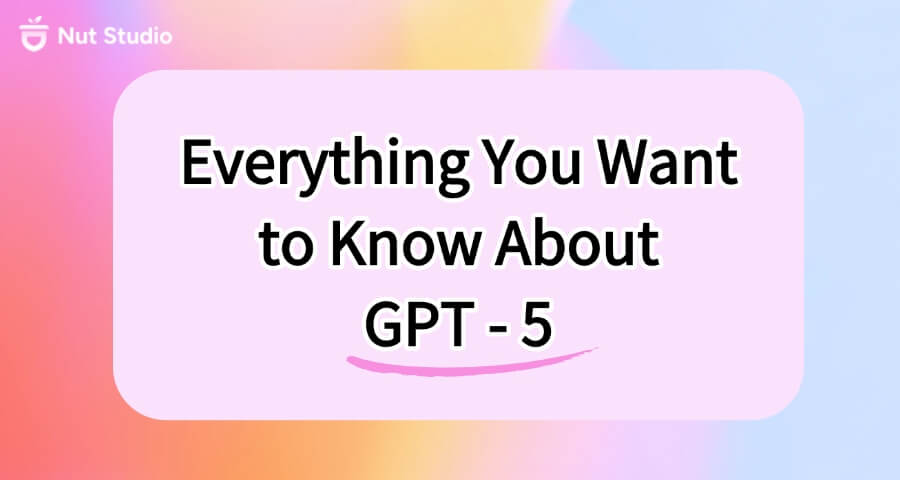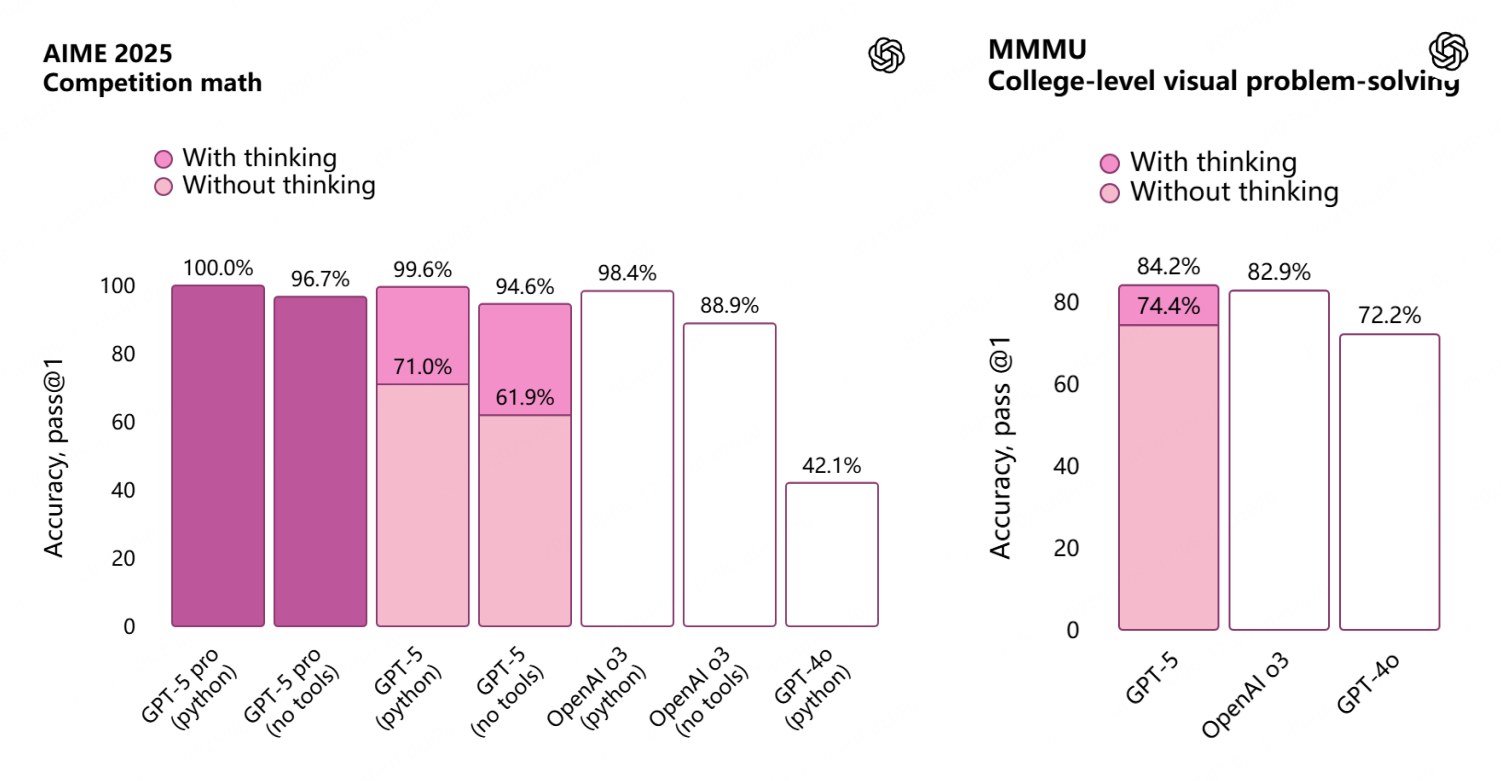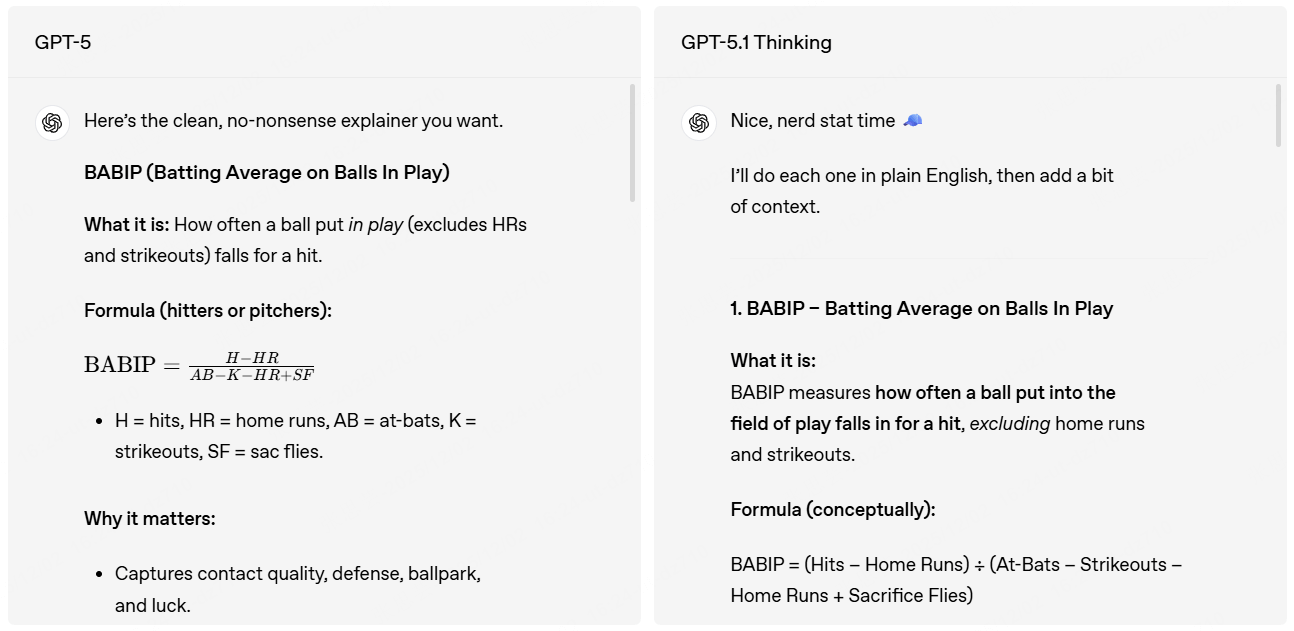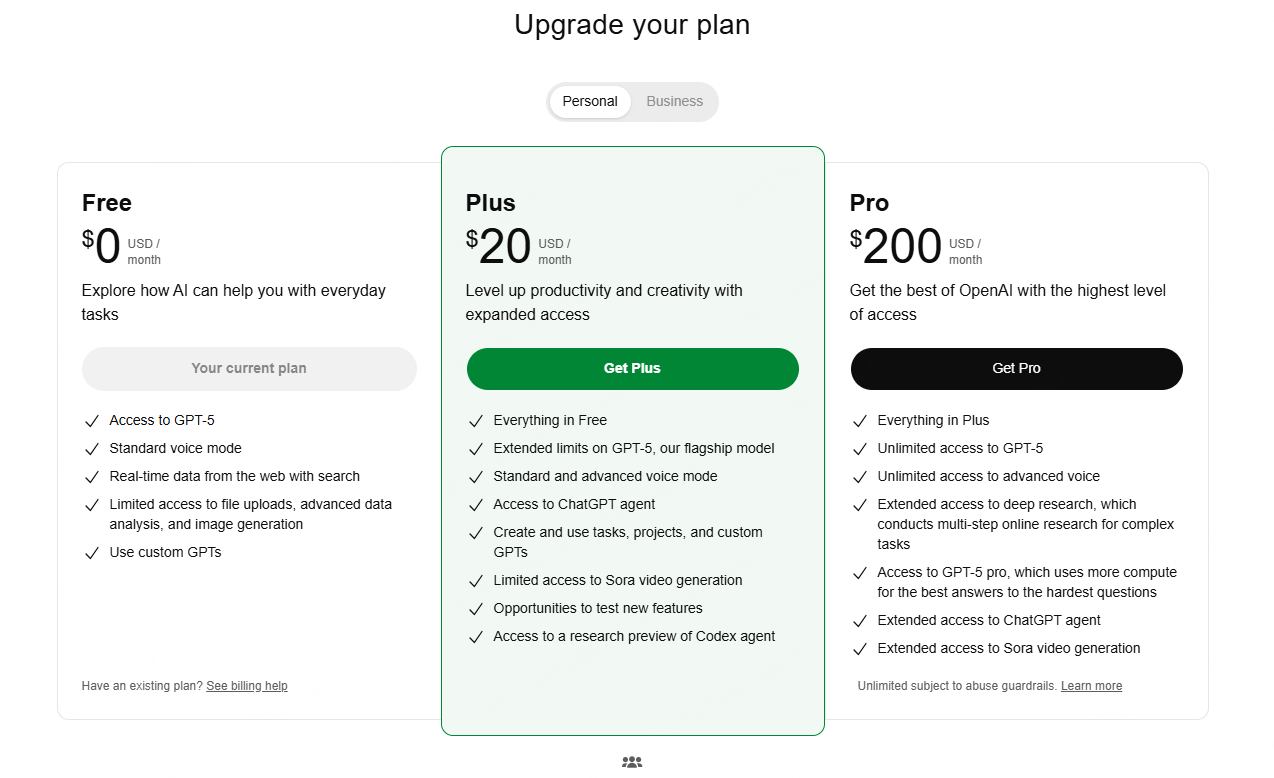
GPT-5.1 is the newest step forward from OpenAI, and it feels like the biggest upgrade yet. As someone who has tested many large models, I can tell you this one is faster, more accurate, and more practical in daily use. You will see changes not only in how it writes or codes, but also in how it understands your intent. In this guide, we will explore the gpt-5.1 features, check its real-world gpt-5.1 performance, and talk about price, release date, and reviews.
CONTENT:
- What is GPT 5.1 And When GPT 5.1 Release?
- [GPT-5.1 Features] What's New with GPT-5.1?
- GPT-5.1 Benchmark: GPT-5.1 vs GPT 5
- What's the Difference of GPT-5.1 Instant, GPT-5.1 thinking?
- How much is GPT-5.1? Subscription Plans or API Usage?
- [Newest Discussion] Users Reviews to GPT-5.1
- FAQs About GPT-5.1
- Conclusion
What is GPT-5.1 And When GPT-5.1 Release?
GPT-5.1 is the latest iterative upgrade of OpenAI's GPT-5 series. It can handle simple questions fast and complex problems with deep reasoning. On November 12, 2025, OpenAI officially announced the launch of openai gpt-5.1. This update not only inherits the powerful capabilities of GPT-5 in coding, mathematics, and writing but also achieves breakthrough improvements in adaptive reasoning, personalized interaction, and tool collaboration, further narrowing the distance between AI and human communication habits.
GPT-5.1 is now available for everyone: free users get basic access, Plus subscribers enjoy higher limits, and Pro users unlock GPT-5.1 plus, which offers even more detailed and thoughtful answers.
[GPT-5.1 Features] What's New with GPT-5.1?
Compared with GPT-5, the improvement of GPT-5.1 lies in the innovative "adaptive reasoning" mechanism, which can dynamically adjust the thinking process according to task complexity, making simple tasks faster and complex tasks more reliable. Here are the main GPT-5.1 features you should know about.
1 Better Coding Skills
GPT-5.1 has optimized on the basis of GPT-5's advantages with more efficient reasoning and more controllable output. It can quickly generate clean and standardized code for multi-scenario needs such as websites, mobile applications, and game development based on simple prompts, and even has in-depth understanding of front-end design details such as layout spacing and font typesetting.
Augment Code pointed out that GPT-5.1 can generate more accurate code changes and smoother pull requests; CodeRabbit directly regards it as the preferred model for code review; Warp even sets it as the default option for new users.
2 Improved Writing Help
Many people felt GPT-5 moved away from the conversational, friend-like experience of GPT-4o. Now GPT-5.1 brings back that warmth, serving both as a companion for when you need to share your thoughts and as a collaborative partner for creative and professional work. It transforms rough ideas into polished, natural content.
For users seeking precision, GPT-5.1 offers fine-tuning controls for response conciseness, warmth, readability, and emoji frequency. It can even detect your preferred style during conversation and offer to save it as a permanent setting. These customized preferences take effect immediately in your current dialogue, eliminating the old limitation where settings only applied to new conversations.
3 More Reliable Health Advice
GPT-5.1 has significantly improved its performance in health information processing, also adding a "mental health + emotional dependence" dual safety assessment dimension, making health advice more reliable and responsible. It acts as a professional health information interpreter—when you consult about chronic disease management, common symptom relief, or health care knowledge, it can not only sort out authoritative information clearly but also take the initiative to mark potential risks and put forward targeted supplementary questions, such as asking about the user's age, basic diseases, and medication history to avoid one-sided advice.
If you want to explore these features without waiting, Nut Studio supports the gpt oss-20b model and offers easy GPT API access. That means you can run powerful AI tools locally.
GPT-5.1 Benchmark: GPT-5.1 vs GPT 5
GPT-5.1 Thinking is smarter about how it uses its time and much easier to understand than the previous GPT-5 Thinking. Especially in important areas like math, coding, and health advice. For most people, the official benchmarks can be hard to understand, so here's a simple way to look at it.
Speed and Efficiency:
GPT-5.1 Thinking now adapts its brainpower to the specific problem you give it. Instead of treating every question the same, it thinks fast for simple questions and takes its time for hard ones. In fact, it is roughly twice as fast on quick tasks and spends twice as long thinking through the toughest problems compared to the previous version. This means less waiting for simple answers and much deeper reasoning for complex requests.

Clarity:
The responses from GPT-5.1 Thinking are much clearer. It uses less jargon and fewer confusing technical terms. This makes the model much more approachable, whether it is explaining a difficult concept or helping with a complex task at work. Here is the example of "explain BABIP and wRC+":

Coding:
When writing and editing code, GPT-5.1 takes a significant leap forward from GPT-5, building on its predecessor’s strengths with key upgrades: GPT-5.1 achieves 76.3% accuracy on the real-world SWE-bench Verified test (which evaluates handling of tricky programming tasks) compared to GPT-5’s 72.8%, while it also features adaptive reasoning that speeds up simple tasks by 2x and optimizes depth for complex ones, plus new tools like apply_patch and shell for more reliable code edits and command execution. With 24-hour prompt caching that cuts repeat query costs by 90% and more efficient token usage, GPT-5.1 not only outperforms GPT-5 in accuracy but also delivers a smoother, more cost-effective experience for building and fixing software.
In everyday use, these improvements mean GPT-5 gives you faster, clearer, and safer answers. It's like having a smarter assistant who double-checks to avoid mistakes.
What's the Difference of GPT-5.1 Instant, GPT-5.1 thinking?
At the GPT-5.1 launch, OpenAI released two main variants: GPT-5.1 Instant and GPT-5.1 Thinking. Here's what the company says they're for — and how that matched my own testing.
GPT-5.1 Instant
A faster, friendlier default model for everyday use.
Primary focus:
Fast response, conversational warmth, and accurate instruction following
Key innovation:
Introduces "adaptive reasoning" that automatically decides when to think deeply and when to respond instantly
Real-world performance:
- Simple questions answered in 2-3 seconds (vs 5-10 seconds for GPT-5)
- Default tone is now "warmer" and more conversational
- Instruction-following capability significantly improved
- Simple task response speed improved by approximately 2x
My experience: It feels like having a more attentive, articulate friend who responds quickly to casual questions while still being able to handle complexity when needed.
GPT-5.1 Thinking
The premium reasoning engine for complex tasks.
Primary focus:
Deep reasoning, structured problem-solving, and professional-grade outputs
Key innovation:
"Dynamic thinking length" that precisely adjusts reasoning depth based on task complexity
Real-world performance:
- Exploring multiple solutions with self-verification
- Clearer output with less jargon and more complete structure
- Achieves 76.3% accuracy on SWE-bench coding tests (higher than GPT-5's 72.8%)
- For simple tasks, speed is approximately 2x faster than GPT-5 Thinking
My experience: It's like having a seasoned expert who takes the time to thoroughly analyze difficult problems while still being surprisingly efficient with straightforward queries.
Key Differences at a Glance
| Feature | GPT-5.1 Instant | GPT-5.1 Thinking |
|---|---|---|
| Best for | Daily chat, quick answers, casual use | Complex reasoning, professional work, multi-step problems |
| Default tone | Warm, friendly, conversational | More formal, precise, professional |
| Response speed | Very fast (avg 2-3s for simple tasks) | Adjustable (2-10s+ depending on complexity) |
| Reasoning approach | Adaptive (automatically balances speed and depth) | Deep, persistent, thorough |
| Output style | Concise, engaging, with personality | Structured, detailed, logically complete |
| Ideal use cases | Customer service, content creation, casual Q&A | Research, data analysis, technical writing, complex decision-making |
How much is GPT-5.1? Subscription Plans or API Usage?
If you're wondering how much GPT-5.1 costs, it's important to know there are two main ways to pay for it: subscription plans and text token cost (pay-as-you-go API usage). The subscription plans work like monthly memberships you buy on the ChatGPT website or app, while token cost applies when you call GPT-5.1 via OpenAI's API—often used by developers or businesses building apps.
Let me break down the key differences between these two payment types, so you can pick what fits you best:
| Aspect | Token-based (API) | Subscription (ChatGPT Web/App) |
|---|---|---|
| Billing | Charged by input + output tokens | Charged monthly, no token counting |
| Target users | Developers, businesses, automation | Regular users, non-technical users |
| Model choices | Any API-supported model | Depends on subscription level |
| Flexibility | High — full control of prompts and settings | Low — fixed ChatGPT interface |
| Cost control | Pay per use, less use means less cost | Fixed monthly fee, use unlimited (within limits) |
So, if you're a casual user who just chats occasionally, a subscription could be simpler. But if you're building an app or need full control over prompts, API token-based billing might work better. Next, I'll explain the detailed price comparison between the two methods for you.
GPT-5.1 Subscription Plans and Prices:
Here's a quick look at the different ChatGPT subscription tiers and what they offer:
| Plan | Monthly Fee (USD) | Key Features | Best For |
|---|---|---|---|
| Free | $0 | Access GPT-5.1 with usage limits, basic tools like file upload and analysis, GPT Store access | Occasional users, budget conscious |
| ChatGPT Plus | $20 / month | Use GPT-5.1 with higher usage limits, plus advanced features like thinking, multimodal, web browsing, research agents, video generation | Everyday users wanting more power |
| ChatGPT Pro | $200 / month | Unlimited GPT-5.1 access, priority to new features. 125 "full" Deep Research queries and 125 "lightweight" Deep Research queries monthly | Heavy users, professionals, researchers |
| ChatGPT Enterprise | ~$25 / user/month (min 2 users, yearly contract) | Enterprise privacy, analytics, single sign-on, dashboards, custom templates, expert support | Large teams and organizations |

GPT-5.1 API Token Pricing:
When you use GPT-5.1 through API calls, you pay based on the number of tokens processed (both input and output). The prices per million tokens differ by model size:
| Model | Input Cost / 1M Tokens | Cached Input Cost / 1M Tokens | Output Cost / 1M Tokens |
|---|---|---|---|
| GPT-5.1 Instant | $0.625 | $0.0625 | $5.00 |
| GPT-5.1 thinking | $0.625 | $0.0625 | $5.00 |
The "Thinking" variant offers adaptive reasoning for complex tasks, while "Instant" is optimized for low latency by running with reasoning_effort='none'. The 90% discount for cached input tokens is a key feature for cost efficiency in long-running sessions or repetitive tasks.
What Does This Look Like for Typical Tasks?
To make this clearer, think about different common tasks and how many tokens they use:
| Task Type | Token Count (Input / Output) | GPT-5.1 API Cost |
|---|---|---|
| Short Q&A | 100 / 200 tokens (300 total) | ~$0.00031 |
| Medium Chat | 400 / 600 tokens (1,000 total) | ~$0.0065 |
| Long Text Gen | 1,000 / 2,000 tokens (3,000 total) | ~$0.02125 |
Which Payment Option Is More Cost-Effective?
Here's a side-by-side comparison of API token costs vs subscription plans at different monthly usage levels (total tokens):
| Monthly Tokens | API Cost | ChatGPT Plus ($20) | ChatGPT Pro ($200) | Best Choice |
|---|---|---|---|---|
| 50,000 | ~$0.56 | $20 | $200 | ChatGPT API |
| 100,000 | ~$1.13 | $20 | $200 | ChatGPT API |
| 300,000 | ~$3.38 | $20 | $200 | ChatGPT API |
| 500,000 | ~$5.63 | $20 | $200 | ChatGPT API |
| 1,000,000 | ~$11.25 | $20 | $200 | ChatGPT API |
| 3,000,000 | ~$33.75 | $20 | $200 | Pro or API, depending on speed needs |
So, if you only chat a little, say under 1,000,000 tokens per month, paying by token via API can save you money. But if you use GPT-5 a lot, especially for long texts or continuous conversations, the Plus subscription pays off quickly.
For very heavy users, like people who run lots of long chats or need advanced features, Pro is worth it despite the higher price. And if you want full control over prompts or build apps, API billing is the flexible choice.
[Newest Discussion] Users Reviews to GPT-5
When GPT-5.1 reviews started rolling in from big media like WIRED, Business Insider, and The Washington Post, the overall tone was cautiously positive. These outlets see GPT-5.1 as a step forward in AI, making "software on demand" feel closer to real life. The technology feels smoother and more practical than before.
But, what about everyday users? I checked Reddit to see real feedback from people actually using GPT-5.1 chat. Many users say GPT-5.1 is better than GPT-5, easy to use and works well for common tasks, and emotional response. One Reddit user said, "Software on demand is starting to feel real". That shows how much the AI is improving.
However, some people felt the entry-level version of GPT-5.1 didn't make a big difference compared to past models. This is just a gimmick.
Here are some real user impressions from Reddit:
| Positive Feedback | Critical Feedback |
|---|---|
| "Smooth and practical to use." | "Entry version feels like minor upgrades." |
| "Great for daily chats and writing help." | "Struggles with deeper reasoning." |
| "More natural responses than before." | "Could be faster in some cases." |
What do you think about GPT-5.1? Have you tried it yet? Leave a comment below and join the conversation with other users.
Experience GPT-5 series alternatives locally at no cost. Nut Studio checks your system specs and suggests only compatible models for optimal performance.
FAQs About GPT-5.1
1 What does GPT-5.1 do?
GPT-5.1, released in November 2025, is OpenAI's flagship AI model series featuring GPT-5.1 Instant, Thinking, and Auto. It can answer questions, create content, write code, analyze data, and support creative/research projects—enhanced by 8 customizable conversation styles, fitting both casual chats and professional workflows.
2 Who can use GPT-5.1?
Anyone with a ChatGPT account can use GPT-5.1. Free users get access with some daily limits, while Plus, Pro, and Enterprise subscribers enjoy higher usage caps, faster responses, and additional features. Developers can also access GPT-5.1 via the OpenAI API for integration into apps, tools, and workflows.
3 Is GPT-5.1 available now?
Yes. GPT-5.1 is rolling out to Free, Plus, and Team accounts.
4 What's the difference between GPT-4 and 5?
GPT-5 is faster, more accurate, and better at reasoning than GPT-4. It supports longer context windows (so it remembers more of the conversation), has improved multimodal abilities, and delivers more consistent performance across complex queries. In short—smarter, quicker, and more capable.
5 How much is ChatGPT 5.1?
ChatGPT 5.1's pricing depends on how you access it:
- ChatGPT Plus: $20/month for higher limits and advanced features.
- ChatGPT Pro: $200/month for unlimited GPT-5.1 access, and premium tools.
- Free plan: $0, with basic GPT-5.1 usage limits.
- API pricing: Starts at $0.625 per 1M input tokens for GPT-5.1.
6 Is GPT-4 gone?
No, GPT-4 is not completely gone, but it's no longer available to free users. When OpenAI launched GPT-5.1, many users missed GPT-4's style and tone, which felt smoother to some. In response, OpenAI's CEO Sam Altman promised to bring GPT-4 back—but only for paid subscribers like ChatGPT Plus users. (source)
If you're on the free plan, GPT-5.1 is now the only option. So, while GPT-4 still exists for paid accounts and API users, free users need to adapt to GPT-5.1 or look for alternatives.
Conclusion
GPT-5.1 marks a major leap in AI technology, delivering faster, smarter, and more practical performance than ever before. Whether you're coding, writing, or seeking reliable advice. With flexible options—from the full GPT-4o to GPT-5.1—you can find the right balance of power and speed for your needs. If you haven't tried GPT-5 yet, now's the perfect time to experience its capabilities firsthand.
-
Best Animes to Learn Japanese in 2025
Discover 14 anime perfect for learning Japanese, from beginner to advanced levels. Get practical tips on using anime and AI to improve your Japanese skills effectively.
10 mins read -
How ChatGPT Helps with Tests: 10 Methods for Preparation
Learn 10 best ways to use ChatGPT for test and exam prep. Get personalized quizzes, instant feedback, and study smarter for SAT, TOEFL, university finals & more.
6 mins read -
How to Use ChatGPT to Learn a Language? 5 Free Ways Tested
Unlock fluency faster with AI language learning. Get 5 powerful ChatGPT strategies and prompts for personalized vocabulary, grammar, and speaking practice.
10 mins read -
45+ Roleplay Prompts for ChatGPT & LLMs: Fantasy, Romantic and Fun
Discover 45+ ChatGPT roleplay prompts! From Fantasy, Romantic to Fun character ideas, try these creative AI character scenarios for fun conversations.
10 mins read -
20 Things You Should Never Tell ChatGPT
Stop letting ChatGPT waste your time. Discover 20 things that AI kill your focus and efficiency, while also learning the essential security rules to work safely.
10 mins read -
Best ChatGPT Prompts for Academic Writing in 2025 [Templates Included]
Discover best ChatGPT prompts for academic writing. Get templates for each step that actually work. Test locally with Nut Studio.
10 mins read
 Nut Studio
Nut Studio












Was this page helpful?
Thanks for your rating
Rated successfully!
You have already rated this article, please do not repeat scoring!